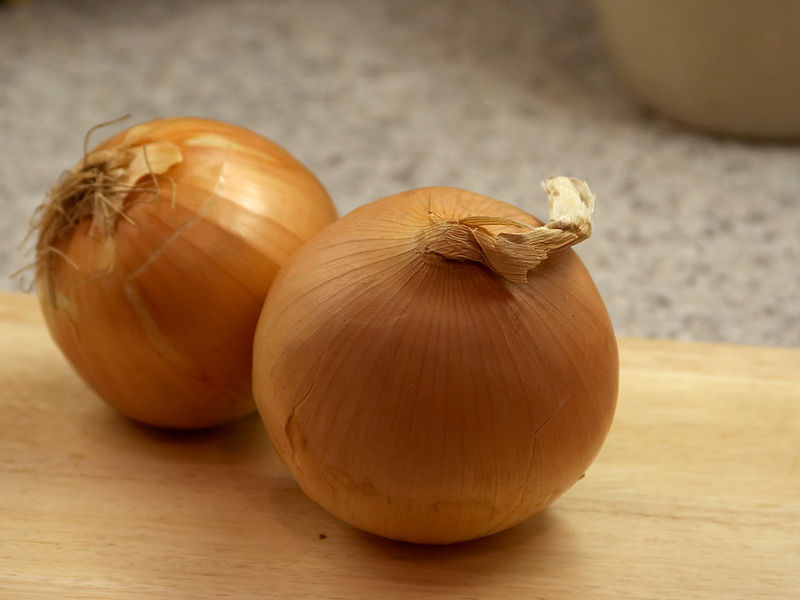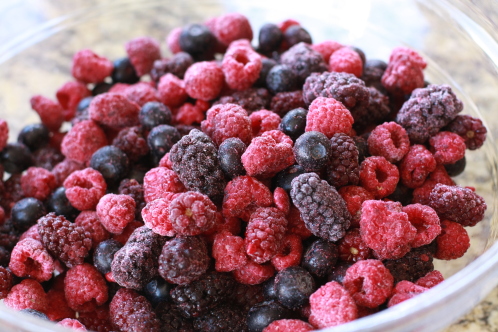Benefits of Onions
What would life be like without onions? The onion has been used as an ingredient in various dishes for thousands of years by many cultures around the world. World onion production is steadily increasing so that onion is now the second most important horticultural crop after tomatoes. There are many different varieties of onion, red, yellow, white, and green, each with their own unique flavor, from very strong to mildly sweet. Onions can be eaten raw, cooked, fried, dried, or roasted. They are commonly used to flavor dips, salads, soups, spreads, stir-fry and other dishes.
Onions belong to the lily family, the same family as garlic, leeks, chives, scallions and shallots. There are over 600 species, distributed all over Europe, North America, Northern Africa and Asia. The plants can be used as ornamentals, vegetables, spices, or as medicine. There are over 120 different documented uses of Onions.
Onion and other vegetables are characterized by their rich content of thiosulfinates, sulfides, sulfoxides, and other oderiferous sulfur compounds. The cysteine sulfoxides are primarily responsible for the onion flavor and produce the eye-irritating compounds that induce lacrimation. The thiosulfinates exhibit antimicrobial properties. Onion is effective against many bacteria including Bacillus subtilis, Salmonella, and E. coli. Onion is not as potent as garlic since the sulfur compounds in onion are only about one-quarter the level found in garlic.
The Onions Value
Onions have a variety of medicinal effects. Early American settlers used wild onions to treat colds, coughs, and asthma, and to repel insects. In Chinese medicine, onions have been used to treat angina, coughs, bacterial infections, and breathing problems.
The World Health Organization (WHO) supports the use of onions for the treatment of poor appetite and to prevent atherosclerosis. In addition, onion extracts are recognized by WHO for providing relief in the treatment of coughs and colds, asthma and bronchitis. Onions are known to decrease bronchial spasms. An onion extract was found to decrease allergy induced bronchial constriction in asthma patients.
Cardiovascular Help
Onions contain a number of sulfides similar to those found in garlic which may lower blood lipids and blood pressure. In India, communities that never consumed onions or garlic had blood cholesterol levels substantially higher, and blood clotting times shorter, than the communities that ate liberal amounts of garlic and onions. Onions are a rich source of flavonoids, substances known to provide protection against cardiovascular disease. Onions are also natural anti-clotting agents since they possess substances with fibrinolytic activity and can suppress platelet-clumping. The anti-clotting effect of onions closely correlates with their sulfur content.
Cancer Prevention
Onion extracts, rich in a variety of sulfides, provide some protection against tumor growth. In central Georgia where Vidalia onion are grown, mortality rates from stomach cancer are about one-half the average level for the United States. Studies in Greece have shown a high consumption of onions, garlic and other allium herbs to be protective against stomach cancer.
Chinese with the highest intake of onions, garlic, and other Allium vegetables have a risk of stomach cancer 40 percent less that those with the lowest intake. Elderly Dutch men and women with the highest onion consumption (at least one-half onion/day) had one - half the level of stomach cancer compared with those consuming no onions at all.
Use and Safety
Onions have a universal appeal. They are safely consumed by most people. However, consuming large quantities of onions can lead to stomach distress and gastrointestinal irritation that may result in nausea and diarrhea. There are no known interactions with drugs except that they can potentiate the action of anticoagulants.
Conclusion
Onions, and other Allium species, are highly valued herbs possessing culinary and medicinal value. Some of their beneficial properties are seen after long term usage. Onion may be a useful herb for the prevention of cardiovascular disease, especially since they diminish the risk of blood clots. Onions also protects against stomach and other cancers, as well as protecting against certain infections. Onion can improve lung function, especially in asthmatics. The more pungent varieties of onion appear to possess the greatest concentration of health-promoting phytochemicals.
- Renix Graham, III
"Water is the only drink for a wise man." - Henry David Thoreau
Get your FREE Healthy Water eBook at: www.AbsoluteWater4theWise.com

















